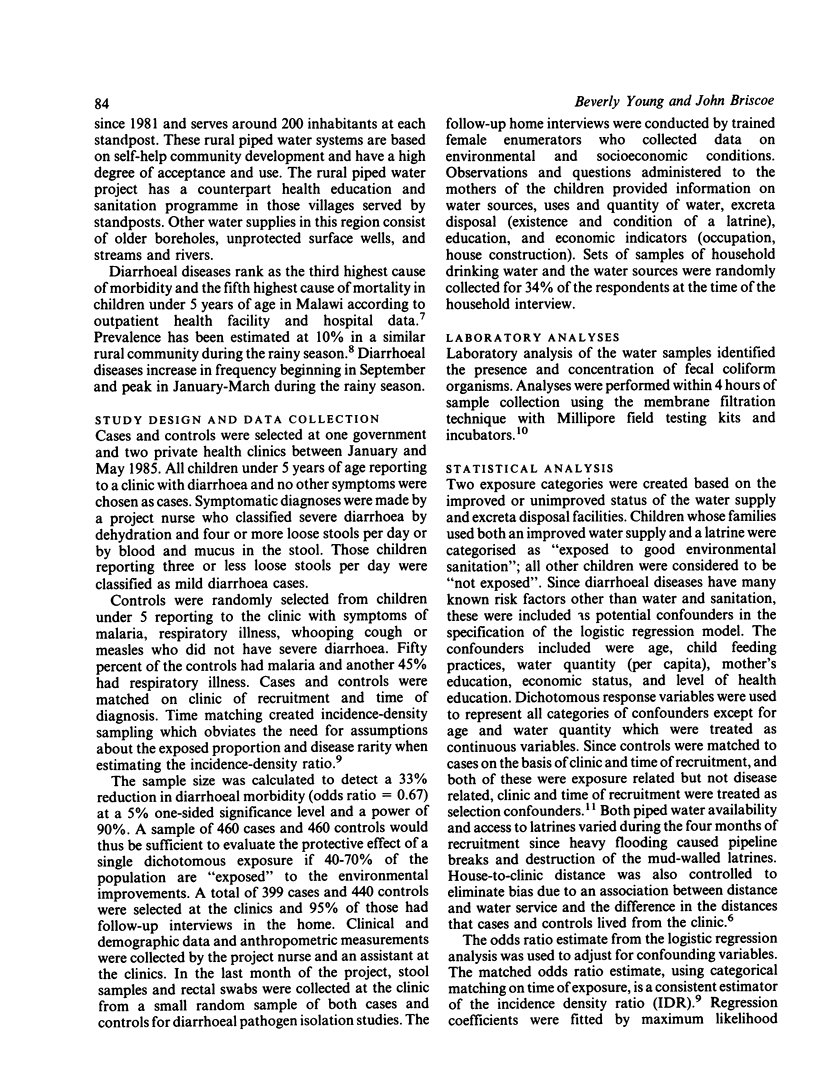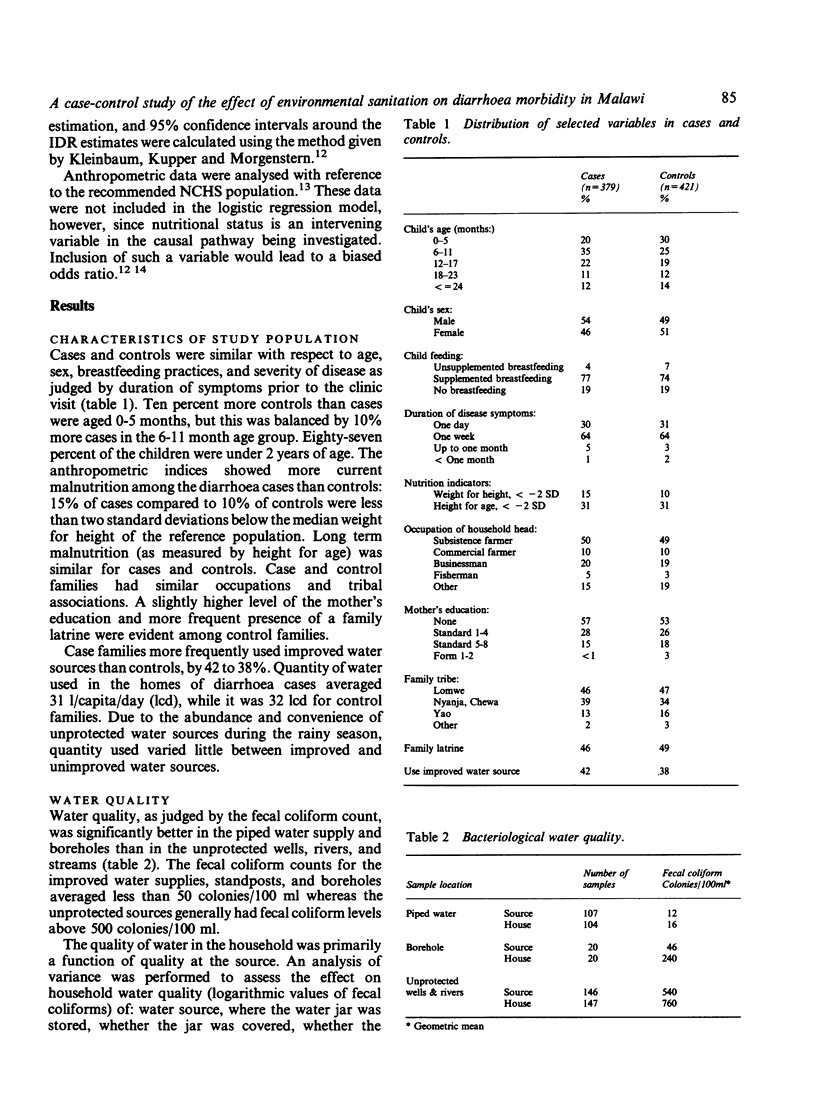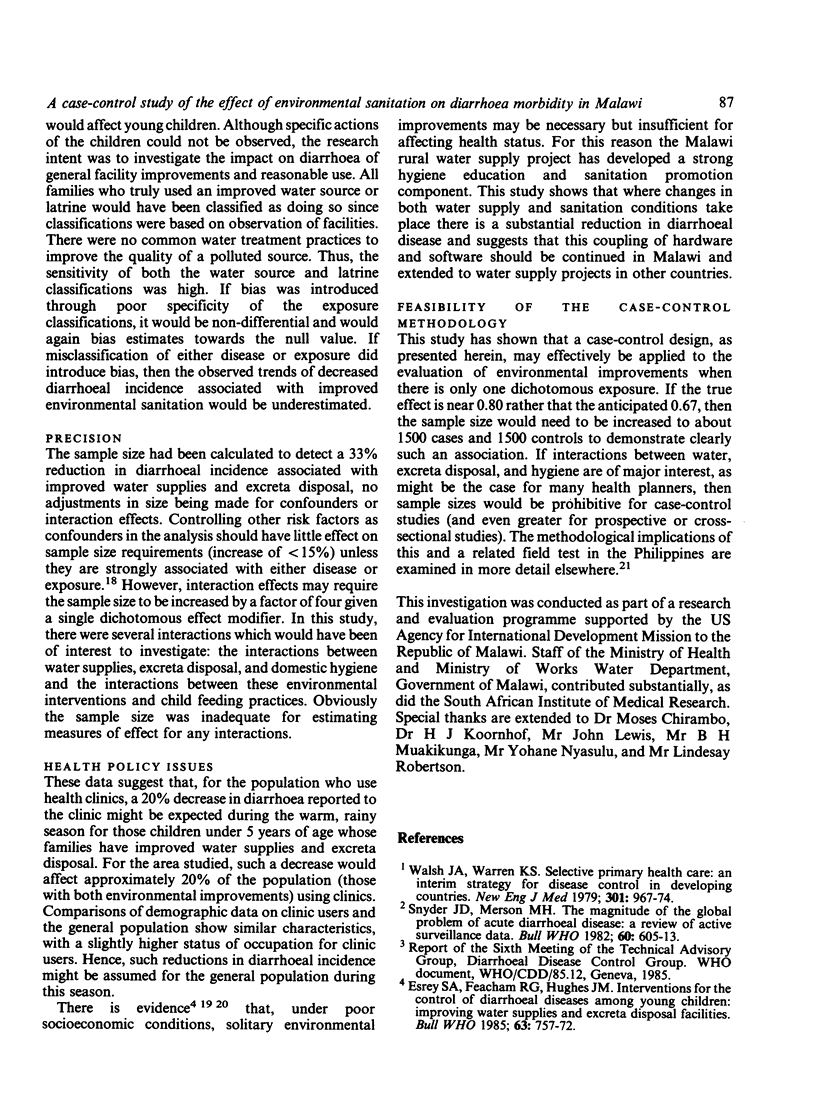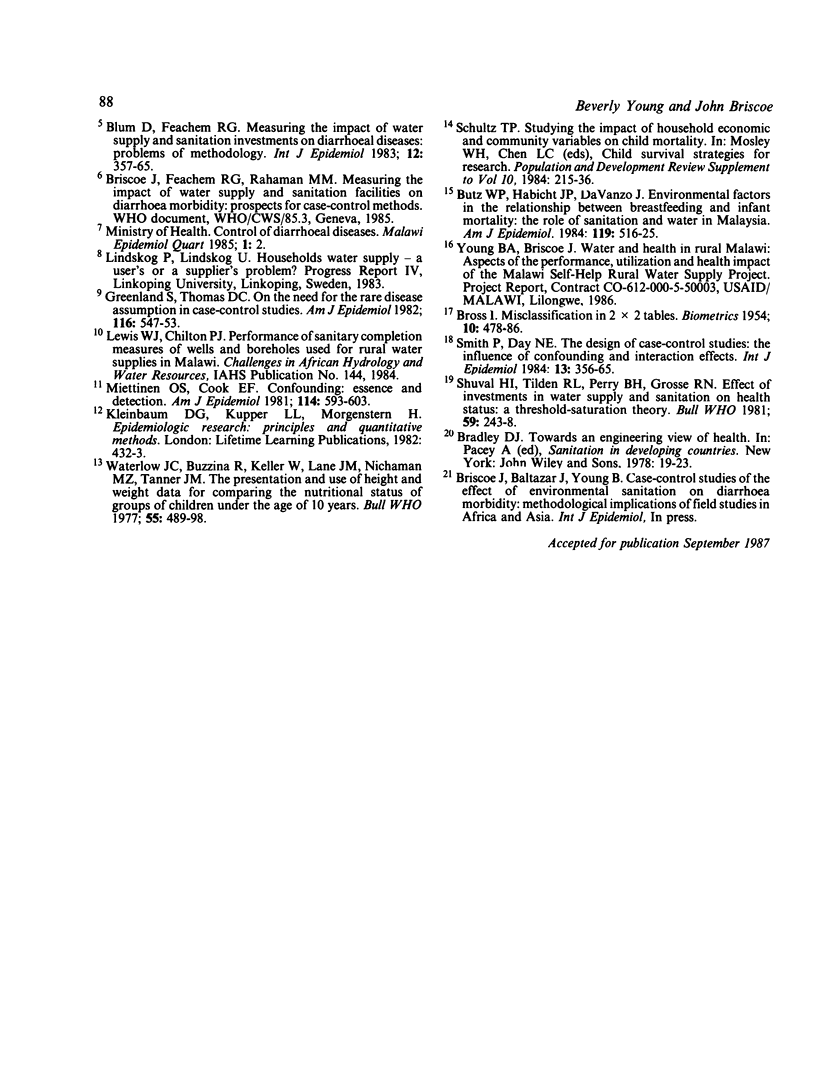Abstract
A case-control design has been applied in the evaluation of improved environmental sanitation on diarrhoeal diseases in rural Malawi. The study demonstrates the feasibility of using such an approach to evaluate two levels of water supply and sanitation service quickly and at moderate cost. Sample sizes would need to be increased substantially to evaluate multiple levels of service or to investigate interactions between water supply and sanitation. The results indicate that children living in families who use good quality water supplies and latrines experience 20% less diarrhoea as reported to the health clinics during the warm, rainy season.
Full text
PDF





Selected References
These references are in PubMed. This may not be the complete list of references from this article.
- Blum D., Feachem R. G. Measuring the impact of water supply and sanitation investments on diarrhoeal diseases: problems of methodology. Int J Epidemiol. 1983 Sep;12(3):357–365. doi: 10.1093/ije/12.3.357. [DOI] [PubMed] [Google Scholar]
- Butz W. P., Habicht J. P., DaVanzo J. Environmental factors in the relationship between breastfeeding and infant mortality: the role of sanitation and water in Malaysia. Am J Epidemiol. 1984 Apr;119(4):516–525. doi: 10.1093/oxfordjournals.aje.a113769. [DOI] [PubMed] [Google Scholar]
- Esrey S. A., Feachem R. G., Hughes J. M. Interventions for the control of diarrhoeal diseases among young children: improving water supplies and excreta disposal facilities. Bull World Health Organ. 1985;63(4):757–772. [PMC free article] [PubMed] [Google Scholar]
- Greenland S., Thomas D. C. On the need for the rare disease assumption in case-control studies. Am J Epidemiol. 1982 Sep;116(3):547–553. doi: 10.1093/oxfordjournals.aje.a113439. [DOI] [PubMed] [Google Scholar]
- Miettinen O. S., Cook E. F. Confounding: essence and detection. Am J Epidemiol. 1981 Oct;114(4):593–603. doi: 10.1093/oxfordjournals.aje.a113225. [DOI] [PubMed] [Google Scholar]
- Shuval H. I., Tilden R. L., Perry B. H., Grosse R. N. Effect of investments in water supply and sanitation on health status: a threshold-saturation theory. Bull World Health Organ. 1981;59(2):243–248. [PMC free article] [PubMed] [Google Scholar]
- Smith P. G., Day N. E. The design of case-control studies: the influence of confounding and interaction effects. Int J Epidemiol. 1984 Sep;13(3):356–365. doi: 10.1093/ije/13.3.356. [DOI] [PubMed] [Google Scholar]
- Snyder J. D., Merson M. H. The magnitude of the global problem of acute diarrhoeal disease: a review of active surveillance data. Bull World Health Organ. 1982;60(4):605–613. [PMC free article] [PubMed] [Google Scholar]
- Walsh J. A., Warren K. S. Selective primary health care: an interim strategy for disease control in developing countries. N Engl J Med. 1979 Nov 1;301(18):967–974. doi: 10.1056/NEJM197911013011804. [DOI] [PubMed] [Google Scholar]
- Waterlow J. C., Buzina R., Keller W., Lane J. M., Nichaman M. Z., Tanner J. M. The presentation and use of height and weight data for comparing the nutritional status of groups of children under the age of 10 years. Bull World Health Organ. 1977;55(4):489–498. [PMC free article] [PubMed] [Google Scholar]


